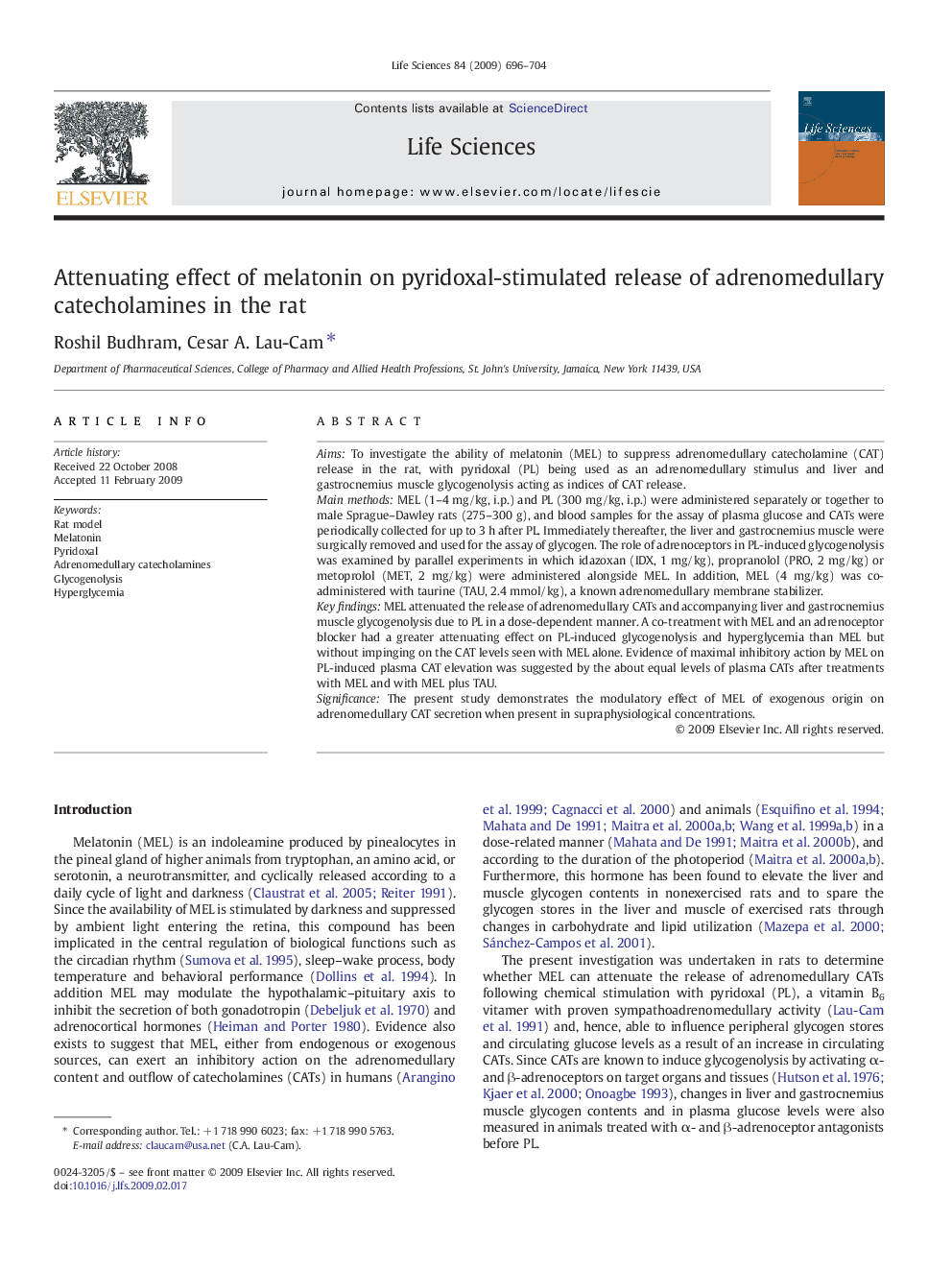| Article ID | Journal | Published Year | Pages | File Type |
|---|---|---|---|---|
| 2552083 | Life Sciences | 2009 | 9 Pages |
AimsTo investigate the ability of melatonin (MEL) to suppress adrenomedullary catecholamine (CAT) release in the rat, with pyridoxal (PL) being used as an adrenomedullary stimulus and liver and gastrocnemius muscle glycogenolysis acting as indices of CAT release.Main methodsMEL (1–4 mg/kg, i.p.) and PL (300 mg/kg, i.p.) were administered separately or together to male Sprague–Dawley rats (275–300 g), and blood samples for the assay of plasma glucose and CATs were periodically collected for up to 3 h after PL. Immediately thereafter, the liver and gastrocnemius muscle were surgically removed and used for the assay of glycogen. The role of adrenoceptors in PL-induced glycogenolysis was examined by parallel experiments in which idazoxan (IDX, 1 mg/kg), propranolol (PRO, 2 mg/kg) or metoprolol (MET, 2 mg/kg) were administered alongside MEL. In addition, MEL (4 mg/kg) was co-administered with taurine (TAU, 2.4 mmol/kg), a known adrenomedullary membrane stabilizer.Key findingsMEL attenuated the release of adrenomedullary CATs and accompanying liver and gastrocnemius muscle glycogenolysis due to PL in a dose-dependent manner. A co-treatment with MEL and an adrenoceptor blocker had a greater attenuating effect on PL-induced glycogenolysis and hyperglycemia than MEL but without impinging on the CAT levels seen with MEL alone. Evidence of maximal inhibitory action by MEL on PL-induced plasma CAT elevation was suggested by the about equal levels of plasma CATs after treatments with MEL and with MEL plus TAU.SignificanceThe present study demonstrates the modulatory effect of MEL of exogenous origin on adrenomedullary CAT secretion when present in supraphysiological concentrations.
